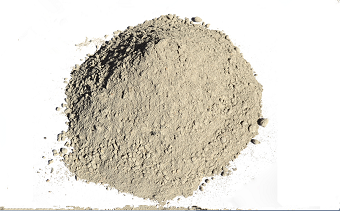Several methods to improve the fluidity of self-flowing castables
Apr 08, 2022
There is no big difference between self-flowing castables and vibrating castables in terms of basic components. The reason why self-flowing castables can flow without external force is that the addition of deflocculating agent (suspending agent) makes the micropowder particles with different charges inside them. Repulsive force is generated between them, resulting in flow. Therefore, its hardening mechanism is consistent with the hardening mechanism of vibration castables, and still works together by hydration and cohesion.
There are several ways to improve the fluidity of castables:

1.1 Reduce the contact between particles
Increasing the amount of matrix reduces the particle-to-particle contact, but at the same time increases the water requirement. In addition, reducing the contact between particles can also be achieved by increasing the potential by adsorbing charges on the surface of colloidal particles. If the amount of SiO2 micropowder is increased, more charges can be introduced into the system, thereby increasing the repulsive force between negatively charged particles to achieve good fluidity.
1.2 Shape of particles
If the fine powder and aggregate particles in the castable are spherical, the flowability of the castable becomes better. The SiO2 micropowder is spherical because it is obtained by:
FeSi+O2→SiO↑+Fe2O3
When SiO encounters hydrated air, it becomes a reaction between Si(OH)·Si(OH)4+Si(OH)4 to form spherical SiO2 powder. Due to the presence of -OH groups at the interface of SiO2 micropowder, the activity is very high.
1.3 Water absorption of aggregates
When the water absorption of the aggregate is small, the amount of water used for mixing is sufficient to ensure the formation of a sol and free flow between particles. Such as electrofusion and plate AL2O3 less water absorption
1.4 Suitable dispersants
In the system with the addition of SiO2 micropowder, the SiO2 colloid is electronegative, and reacts with AL3+ and Ca2+ plasma to agglomerate, reducing the fluidity of the castable. When alkali metal phosphate is added as a dispersant, the AL3+ and Ca2+ plasma is negatively charged with phosphoric acid. The root ions are surrounded by multivalent negative charges; while the SiO32+ ions formed by SiO2 are surrounded by Na+ ions and are in a loose state. At this time, the repulsive force between phosphate ions (wrapped with AL3+ and Ca2+) and SiO32+ acts to increase the fluidity.
1.5 Use a small amount of high alumina cement and add delayed hardener
Cement-free castables have insufficient strength at 110°C, and a small amount of cement is added to maintain the strength of the castable body at room temperature to 110°C.
Relevant information
-

Main properties of magnesium oxide refractory
Performance characteristics of magnesia refractories and other basic refractories Performance characteristics of magnesia refractories and other basic refractories Refractories containing more than 80% ... -

What properties of lightweight insulation fire clay bricks can be improved by the addition of kyanite?
Lightweight insulation fire clay bricks are a kind of shaped refractory material with clay as the main raw material, which is processed, shaped, dried, and calcined with clay. on the kiln. Due to the r ... -

How is the effect of white fused alumina abrasive used in refractory materials?
After mixing, forming, drying, and firing at high temperature in a shuttle kiln. The product has the characteristics of high refractoriness, good thermal shock stability of white corundum, high high te ... -

Characteristics of refractory magnesia chrome bricks for lime kiln
Lime kilns are mainly classified into square kilns and circular kilns. According to the classification of fired products, they can be divided into lime kilns, ceramic kilns, cement kilns, glass kilns, ...

